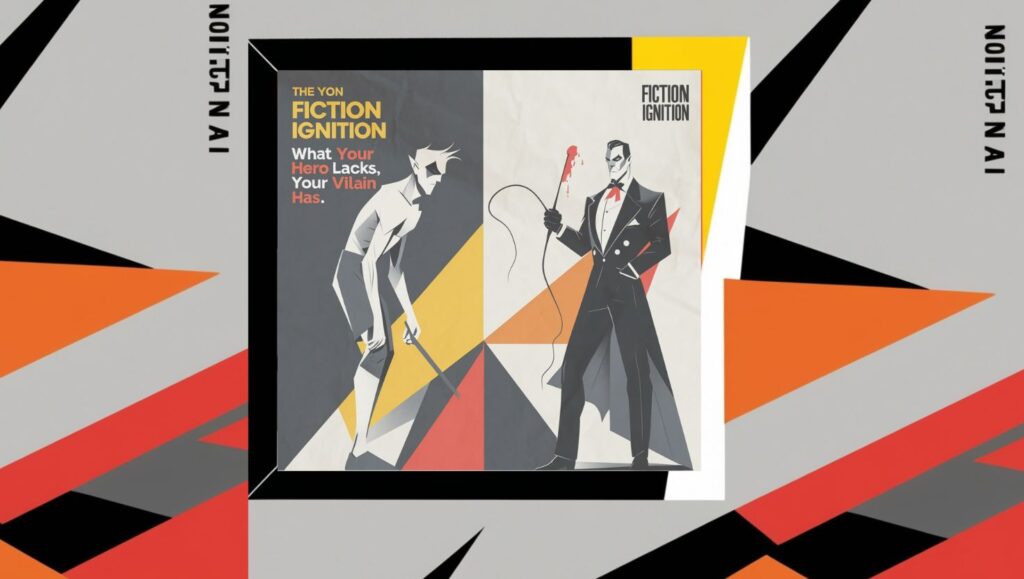Stephen King, the master of horror, sure, but also the master of the Third-Person Omniscient POV .
Greetings, Fiction Igniters!
What if I told you Stephen King doesn’t just scare us with monsters, but with perspective itself?
That’s right, today, we’re cracking open the inferno-laced vault of narrative wizardry, diving headfirst into a Stephen King scene from It (1986)—a masterclass in psychological horror, point of view sorcery, and emotional combustion.
Grab your fireproof gloves and literary magnifying glass, because we’re about to dissect how King uses the Third-Person Omniscient POV not like a gentle narrator on a hill, but like a scalpel in one hand and a sledgehammer in the other.
🎯 The Scene: Tom Rogan Attacks Beverly Marsh
A quick recap: Beverly just received a phone call that compels her to return to her childhood town of Derry. Tom, her abusive husband, has come home to find her packing her bags and smoking a cigarette, something he has forbidden her to do. This gets him fuming with a deranged mixture of ego and abandonment, so he takes his belt out and proceeds to teach Beverly a lesson. What follows is an intensely cinematic and emotionally brutal confrontation—a horror scene not just of physical violence, but of psychic unraveling.
🔥 What King Is Actually Doing: Third-Person Limited Omniscient POV (Deep POV)
Let’s kill a myth first: King is not using an omniscient narrator in this scene. He’s not playing God. He’s possessing characters.
King starts in Tom’s POV, then transitions into Beverly’s, but never floats above like an all-knowing eye. Instead, he drills into each character’s psyche using deep third-person limited—a.k.a. free indirect discourse. This is where the narrator becomes invisible and the prose starts to mimic the character’s voice, thought patterns, prejudices, and inner monologue. No italics. No “he thought.” Just raw, unfiltered perception.
🔍 Examples from the Passage
👹 Inside Tom’s Head:
“She had not only been smoking, she had tried to grab the belt away from him, and oh folks, oh friends and neighbors, she had asked for it…”
That “oh folks, oh friends and neighbors” isn’t King. That’s Tom’s twisted inner voice leaking into the narrative. The line is showboaty, cruel, and self-justifying—exactly like Tom. This isn’t omniscient observation. It’s deranged self-righteousness.
👩🦰 Inside Beverly:
“She was not a stupid woman, certainly not stupid enough even now […] to believe that she had not loved Tom and did not in some way love him still.”
Boom. Instant psychological realism. Beverly’s self-loathing, her conflicted love, her denial—it’s all there. But there’s no “she thought” or “she reflected.” The prose is her. It pulses with her confusion and pain.
🎯 One More, Pure Tom:
“School was in session. The old one-two. First the whuppin, then the fuckin.”
There is no filter between the reader and Tom’s abusive mindset. It’s like we’ve crawled into his skull, and he’s narrating reality with the cold logic of a sociopath.
🔬 What Makes The Third-Person Omniscient POV Work So Well? King’s Techniques
1. 🧠 Free Indirect Discourse
This is King’s flamethrower. Free indirect discourse allows him to write thoughts in the third person without tags or formatting. Readers don’t need to be told who’s thinking. We just feel it.
2. 🗣️ Voice-Inflected Narration
King’s narrator shifts accents. It speaks in Tom’s brutish ego or Beverly’s broken rationalizations.
- “Oh folks” = Tom’s twisted showman
- “Tub of guts” = Beverly’s inner disgust
- “Gagging scent of flowers” = Tom’s sensory revulsion
The narrator isn’t neutral. It’s tinted by character emotion and judgment.
3. 🎥 Smooth Third-Person Omniscient POV Transitions
King doesn’t yank us from mind to mind. He transitions like a film director switching from one close-up to another:
- Emotional arcs conclude before switching POV.
- Paragraph breaks or new scenes cue the change.
- First sentence of new POV anchors us emotionally and psychologically.
Example: From Tom’s rampage to Beverly’s fear and retaliatory action, each shift feels earned.
This is especially powerful in horror, where interiority = terror.
💡 Should You Use This In Your Own Work?
Yes, Firebrand Fabulist, absolutely yes. The Third-Person Omniscient POV will:
- Give you emotional intensity
- Let characters lie to themselves and readers (perfect for unreliable narrators)
- Let you explore inner contradictions and trauma
- Filter reality through perception, not exposition
You want the reader to feel trapped in the characters’ fear, rage, shame? The Third-Person Omniscient POV is your furnace.
The Third-Person Omniscient POV also lets you hide and reveal information as needed for psychological horror or mystery—by using characters’ selective awareness. Think filmic close-ups, subjective camera work, and noir-style misdirection.
🧠 Fiction Craft Note: Multiple POVs in One Chapter
Most editors advise: one POV per scene. But King, Morrison, and Woolf don’t listen—and neither should you, if you do it well.
How to Pull It Off:
- Change POV only after a completed emotional beat.
- Use scene or paragraph breaks.
- Immediately anchor the new POV emotionally or sensorially.
“Time after time she had seen herself leaving him…” ← anchors us inside Beverly
Masters of the Third-Person Omniscient POV:
| Author | Book | POV Mastery |
|---|---|---|
| George R.R. Martin | A Song of Ice and Fire | One POV per chapter, deep and internalized |
| Toni Morrison | Beloved | Mid-paragraph shifts with poetic purpose |
| Virginia Woolf | Mrs. Dalloway | Seamless floating POV, psychological immersion |
| Cormac McCarthy | The Road | No quotation marks, minimal tags, total absorption |
| Shirley Jackson | We Have Always Lived in the Castle | Unreliable, internalized, atmospheric narration |
| Alice Munro | Too Much Happiness | Emotional depth, elegant shifts |
| Donna Tartt | The Secret History | 1st person, but uses deep POV techniques |
✍️ Third-Person Omniscient POV Exercises to Fire Up Your Fiction:
- Rewrite a First-Person Scene in the Third-Person Omniscient POV:
- Keep the voice.
- Drop the “I.”
- Let the world feel subjective.
- Practice a Mid-Chapter Third-Person Omniscient POV Switch
- Write one scene from two perspectives.
- Anchor each in emotion.
- Use Voice-Inflected Narration
- Pick a character with strong biases.
- Describe a room, a person, or a memory through their inner lens using Third-Person Limited Omniscient POV.
- Strip Out Thought Tags
- Eliminate “she thought,” “he remembered,” “they realized.”
- Let interiority emerge from syntax, rhythm, diction.
✅ Best Practices for the Third-Person Omniscient POV
- Pick a Third-Person Omniscient POV and go deep. No surface narration.
- Infuse narration with the character’s voice, slang, and judgments.
- Express emotion through body, rhythm, and breath, not exposition.
- Control POV shifts like a cinematic cut, not a flickering montage.
- Show perception, not explanation.
🧨 Closing Third-Person Omniscient POV Ignition
Stephen King doesn’t just write horror. He writes internal horror. He puts you in the sweaty grip of monsters—real or imagined—by writing their minds from the inside out.
Use the Third-Person Omniscient POV in your fiction, Blaze Bard, and you’ll ignite fear, sympathy, suspense, and realism all in one terrifying stroke.
So, remember, until next time: don’t write, ignite! 🔥
Writing in First-Person vs. Third-Person: How to Choose the Right Perspective









